By: Eric Siegel, Founder, Predictive Analytics World
In anticipation of his upcoming conference keynote presentation, UPS Analytics – The Road  to Optimization, at Predictive Analytics World for Business Chicago, we asked Jack Levis – Senior Director, Process Management at UPS, a few questions about his work in predictive analytics.
to Optimization, at Predictive Analytics World for Business Chicago, we asked Jack Levis – Senior Director, Process Management at UPS, a few questions about his work in predictive analytics.
Q: In your work with predictive analytics, what behavior do your models predict?
A: We use a tremendous number of predictive and prescriptive models at UPS. They are used to help make decisions, which range from where to build a facility and what type of aircraft to purchase to which packages go in each trailer and how to maintain our delivery fleet.
We currently have 700 dedicated resources working on a system called ORION, which has been called "arguably the world's largest Operations Research Project." With ORION, we are using analytics to determine the best way for a driver to serve our customers at the lowest cost.
Q: How does predictive analytics deliver value at your organization? What is one specific way in which it actively drives decisions?
A: We do not do anything by the "seat of our pants." Analytics is engrained so deep in our culture, it is difficult to separate analytics-driven decisions from normal business processes.
In 1954, our CEO said, "If we did not have operations research, our rate of growth might have been affected. As we grow in size, our problems increase geometrically. Without Operations Research, we would be analyzing our problems intuitively only, and we would miss many opportunities to get maximum efficiency out of our operations."
Analytics has helped UPS make better decisions in all parts of our business.
Q: Can you describe a successful result, such as the predictive lift of your model or the ROI of an analytics initiative?
A: In 2003, UPS began using predictive models to better plan our delivery operations. This suite of tools called Package Flow Technologies along with Telematics has been responsible for a yearly reduction of 85 million miles driven per year. This reduced our fuel needs by over 8 million gallons and reduced carbon emissions by 8,500 metric tons.
In addition, because the analytics and business processes are fully aligned, we have been able to deploy new products for customers. UPS' MyChoice is a prime example of that.
Q: What surprising discovery have you unearthed in your data?
A: Two surprises come to mind. The first has to do with the maintenance of our delivery fleet. Through the use of Telematics data with diagnostic and predictive models, we can predict vehicles and parts that are getting ready to fail. This has reduced our failure rate and maintenance cost at the same time.
The second surprising discovery is from our ORION optimizations. We have seen significant additional improvements beyond predictive analytics. ORION has been able to determine new ways to run a delivery route that we did not think of through previous methods.
ORION and Telematics are examples of how analytics can take an already efficient organization and make additional gains through predictive and prescriptive modeling.
Q: Sneak preview: Please tell us a take-away that you will provide during your talk at Predictive Analytics World.
A: Conventional wisdom says that as an organization moves from descriptive analytics to predictive to prescriptive, the skills need to grow. However, the benefits grow tremendously during this process as well. This matches UPS's experience exactly.
We will show our journey through these stages of analytics, as well as the lessons learned along the way. The presentation will culminate with examples of "non-intuitive" insights that can only be seen through the use of advanced analytics.
Don't miss Jack Levis' keynote presentation, UPS Analytics – The Road to Optimization, at Predictive Analytics World for Business Chicago on Tuesday, June 9, 2015, from 8:50-9:40 am. Click here to register for attendance.
By: Eric Siegel, Founder, Predictive Analytics World
